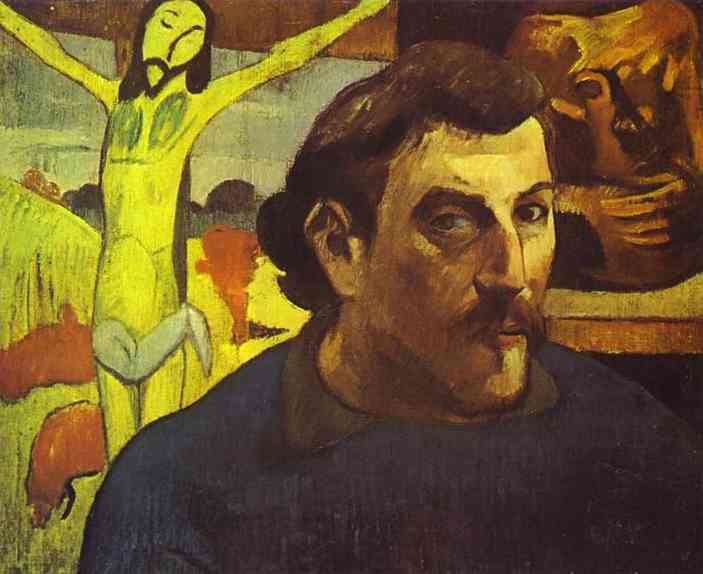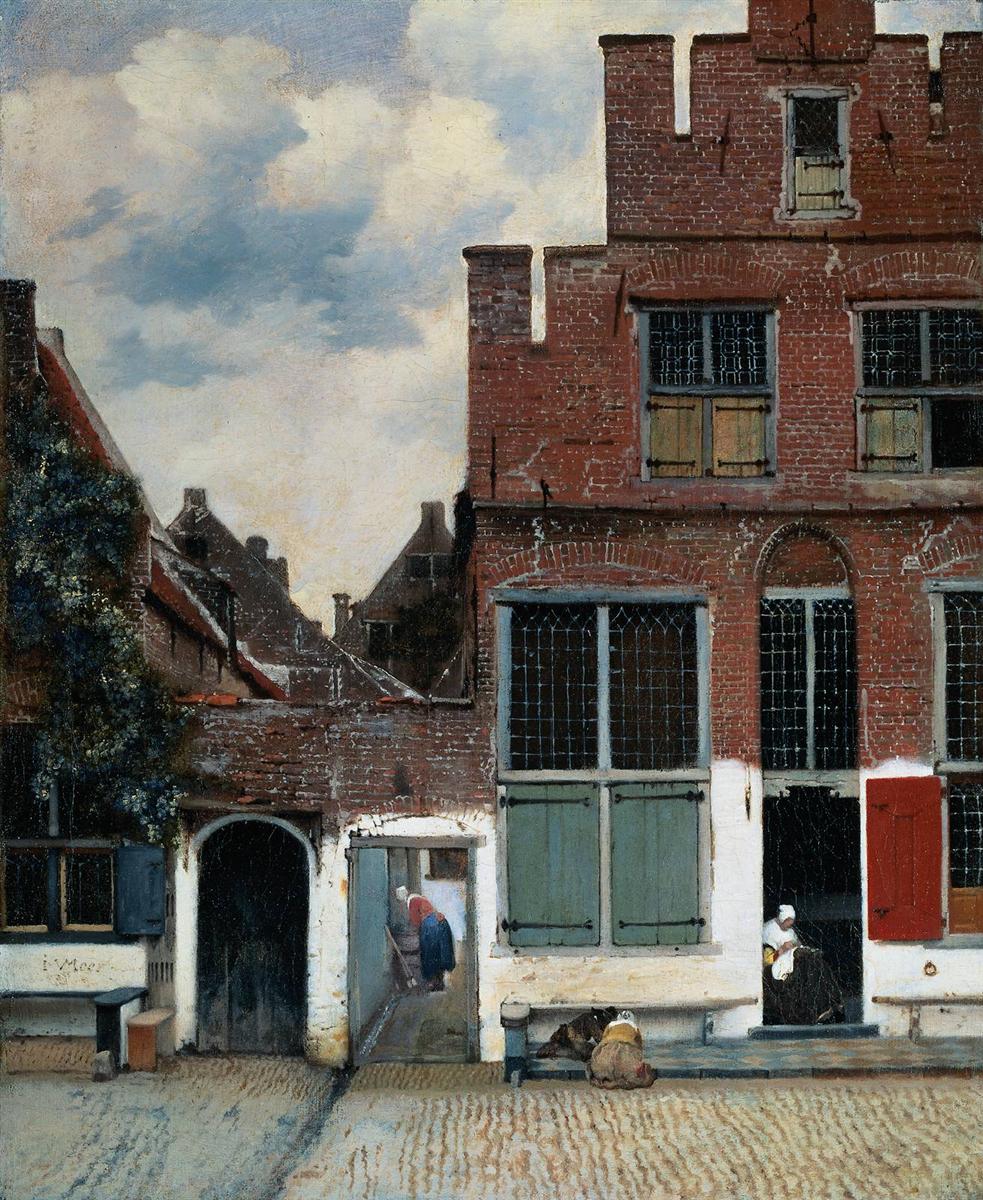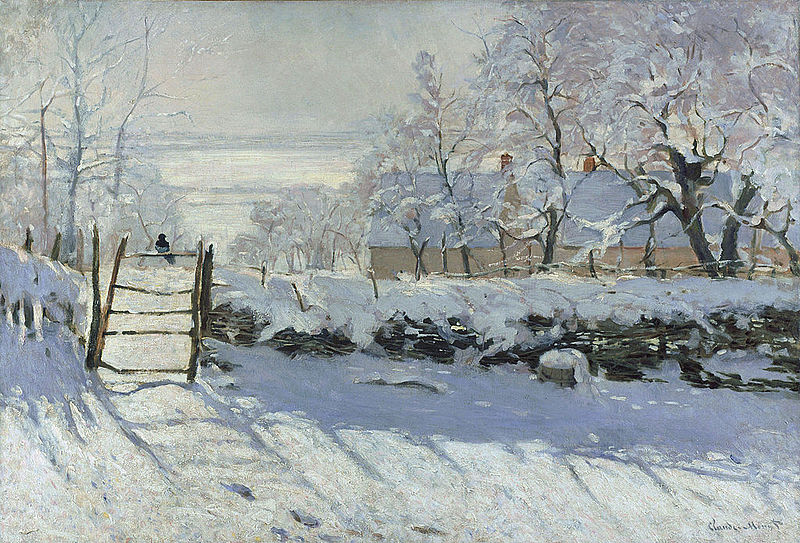From “Why painting?” series

I love museums.
With few exceptions, they are the only institution we have which gives everyone a chance to see the greatest, most powerful, most breathtaking paintings in the history of humankind. Whenever I hear of a masterpiece in a private collection, unaccessible, hidden from public view, what I feel is a pain of loss, made even more painful by the fact that I have only a hint, a mere shadow of knowledge of the thing lost.
And yet the very concept of art museum generates a disruptive disconnect between art and life — the disconnect which gives rise to the question this series is intended to explore: does the modern world need painting?
I wrote about one aspect of this disruption last week: the separation of two intrinsically inseparable “functions” of a painting: showing and creating a space. Museums, almost by definition, contain paintings worth seeing even if they are in effect stripped of their space-creating function — the best paintings. There is an unquestionable wisdom in this, since places we live in are increasingly private; they are — to borrow Virginia Woolf’s phrase “rooms of our own”. If a painting is to be seen by many, it cannot remain in a one’s own room. The problem is, however, that housing the greatest paintings in museums downplays the role of paintings as creators and “holders” of living spaces — and thus disconnects painting from life.
There was a recent essay on Dieter Rams on “The Book of Life” site, which has brought this problem into a clearer focus for me. Here is a quote:
If you cared about bringing more attention and care to the little things of everyday life in 1650, you might have gone into painting. The Dutch painter Johannes Vermeer was an advocate for paying more attention to the humble objects in daily life. In The Little Street (valued at £100 million) he portrays a life governed by simplicity and modesty.
Vermeer notices the details: the lived-in neatness and order, the sturdy seats outside, the basic broom. Rams values the same things that Vermeer does, but he has turned these values into products we can use in our own lives.
There is no dividing line between art and product design. Paintings were originally meant to be part of daily life, to hang in your kitchen or the hallway, so they would seep into your life. Nowadays, we might only see Vermeer’s work once or twice every few years. Whereas Rams’s work we can buy and live with every day.

Here is the basic contrast between paintings as space creators, as silent companions of our daily life — and paintings as a “museum experience”. But do you notice the problem, the hole in this argument? Paintings were meant to participate in creating our living spaces, but now we would only see Vermeer’s work occasionally, in a museum…
Both statements are undoubtedly true, but it is obviously not the case that Vermeer’s work was a part of everyone’s daily life back then; very few people had Vermeer’s paintings on their walls, and as for others, they couldn’t see his work at all. If they had paintings hanging in their kitchens and hallways, these were mostly paintings by other artists — who might not be as famous as Vermeer is now, but who probably shared Vermeer’s fascination with humble details of daily life, because that was the spirit of the age (and nowadays, there are also many painters working in the same tradition). Yet somewhat paradoxically, the very fact that we can now see Vermeer’s work in museums leads to paintings being banished from “daily life”, from their part in creating our living spaces. This is the conclusion reached by the author of the essay:
The true artist of our age designs phones and alarm clocks, rather than pieces of canvas.
This is how the museum — while putting art on a pedestal — simultaneously, and by the same token, banishes it from our daily life. But can phones and alarm clocks really replace paintings in their space-creating role? Or, to look at this question from another perspective: can a “lesser” painting — a painting that hasn’t deserved a place in a museum (yet) — be successful in this role? Is it capable of creating a space in which life would seem more beautiful, more worth living?
The underlying question is: what are “museum-quality” paintings? What makes a painting worthy of its place in a modern museum?
Oversimplifying the matter somewhat, it’s a combination of three factors: mastery, antiquity, and novelty. “Mastery” is, I believe, self-explanatory. “Antiquity” is also really simple: any artefact that is old enough earns its place in a museum just by virtue of its age (even a humble household item, like a cup, if it has managed to survive for a millennium, becomes a museum-worthy object); paintings are no exception.
The quality of novelty is a bit less straightforward. In my previous essay, I quoted Rilke’s words about the public attending Cézanne’s retrospective and unable to really see what Cézanne shown, but let me now add his conclusion from the same letter:
… one comes back to the thought that every recognition (with very rare, unmistakable exceptions) should make one mistrustful of one’s own work. Basically, if it is good, one can’t live to see it recognized: otherwise it’s just half good and not reckless enough …
What he means is that for a work of art to be really good, it must communicate an experience so new, so unprecedented in human history, that the contemporary public cannot be expected to recognise it; by and large, it cannot really “receive” the communication. The new experience will need some time to slowly work its way into the human consciousness; at first, only a few (a happy few) will see what they look at, and hear what they listen to. This quality of novelty is what makes a painting a part of art history and earns it a place in a museum: such paintings make visible what was invisible before; they communicate and share a new inner experience, discovered (or “uncovered”) by the artist. Generally, a painting that just repeats what was already expressed before doesn’t belong in a museum.
For example, Claude Monet expanded our sense of vision — the eyes of someone who has deeply seen his paintings are now open to a whole range of new and richer experiences; experiences so new that, in the beginning of his work life, most viewers were genuinely unable to perceive them. This expansion defines his place in the history of painting, and in the history of evolution of human consciousness. That’s why his paintings are in museums all over the world. But by now, this experience is part of our shared inheritance (even though not everyone has claimed it). An artist who works within the same range of experiences, already uncovered by Claude Monet more than a century ago, wouldn’t contribute to art history, whatever their level of mastery — and they wouldn’t pass Rilke’s high standard for being “good enough”.

But this “commandment of novelty” is a relatively new idea; most great artists of all time didn’t strive to express something new— if anything, they were after something eternal. When a new way of experiencing the eternal happened, it happened “on its own” (and there were relatively few such grand breakthroughs in the history of humankind). But somewhere in the beginning of the last century, the humankind looked back at its own history of art, and saw it as a series of such breakthroughs on the path of making the invisible visible, as a progression of new inner experiences visualised in art. And nowadays, this newness has become implicitly opposed to pastiche, to non-genuineness — and thus, in effect, equated with “true art”; if it’s not new, it’s not good enough.
But is love one feels oneself any less genuine, any less meaningful, any less life-giving because it has been experienced by other people before?
So is it with painting, I think: if the experience communicated by a painting is not breathtakingly new, it doesn’t mean it is not authentic — nor does it make the painting less capable of creating a beautiful, life-supporting space out of a humble room. For a painting in a room of one’s own, the question is not whether the experience is new and unprecedented — it’s whether you need it in your life.